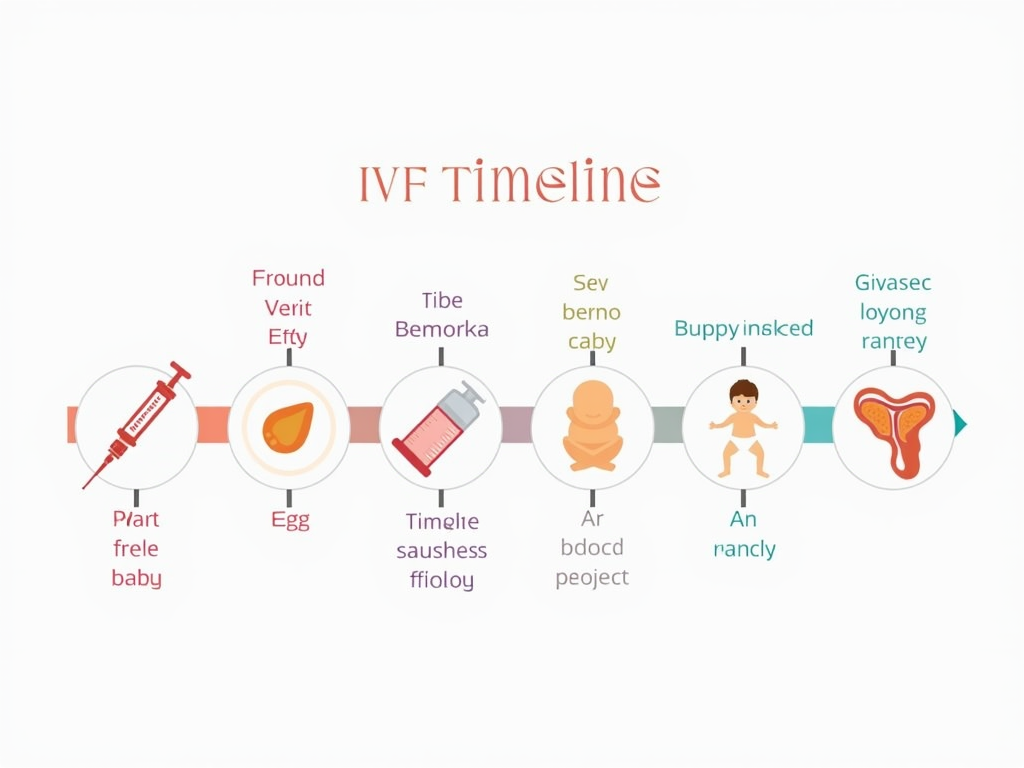Navigating IVF: A Comprehensive Guide
March 17, 2025, 8:02 a.m.
Navigating IVF: A Comprehensive Guide offers a clear roadmap for anyone considering or undergoing in vitro fertilization (IVF). This article breaks down the process, tackles emotional and financial aspects, and shares real insights to help you through your fertility journey.

What is IVF?
In vitro fertilization, or IVF, is a popular fertility treatment where doctors retrieve eggs from a woman’s ovaries and fertilize them with sperm in a lab. After a few days, the resulting embryos are placed back into the uterus to try for a pregnancy. People turn to IVF for many reasons, like infertility from blocked tubes or low sperm count. It’s a process that blends science and hope, giving couples a chance at parenthood.

Why Consider IVF?
Facing infertility can feel isolating, but you’re not alone—millions deal with it every year. IVF shines as a solution when other methods fail. Maybe you’re over 35, or perhaps you’ve got endometriosis or a partner with sperm issues. These challenges make IVF a go-to option. Talk to a specialist to see if it fits your story. It’s not just a treatment; it’s a step toward possibility.
The IVF Journey
IVF isn’t a single event—it’s a series of steps. Here’s what happens:
-
Consultation: You start with tests and talks with your doctor to pinpoint why conception isn’t happening.
-
Stimulation: You take meds for about two weeks to grow multiple eggs, checked by ultrasounds.
-
Retrieval: A quick procedure grabs the eggs while you’re sedated—no big deal, just a nap.
-
Fertilization: Sperm meets egg in the lab, sometimes with a little help from a needle.
-
Transfer: A few days later, embryos go into your uterus. It’s simple and fast.
-
Waiting: Two weeks of suspense before a blood test shows if it worked.
Stay close to your team—they guide you through every moment.

Emotional Highs and Lows
IVF can lift you up and wear you down. One day you’re hopeful; the next, you’re anxious about the costs or the wait. That’s normal. Lean on friends, family, or a support group—talking helps. I remember pacing during my two-week wait, unsure what to feel. Give yourself grace. A counselor can be a lifeline too. Your heart matters as much as your body here.

What Are the Odds?
IVF success isn’t guaranteed, but numbers give a clue. For women under 35, about 30% of cycles lead to a baby. Over 40? That drops to around 10%. Age, health, and clinic quality play big roles. Don’t expect a sure thing—sometimes it takes a few tries. Ask your doctor for your odds. Knowing this keeps your feet on the ground.

Counting the Costs
IVF hits the wallet hard. In the U.S., one round can cost $12,000 to $15,000, plus extra for meds. Insurance might help, but often it doesn’t. Check your plan, look into loans, or hunt for grants—some groups offer aid. My partner and I budgeted like crazy, and it still stung. Plan ahead, and don’t be shy about asking for financial advice.

Other Paths to Parenthood
IVF isn’t the only game in town. Depending on your situation, best fertility treatments for women might include pills to kickstart ovulation or intrauterine insemination (IUI), where sperm goes straight into the uterus. Surgery can fix some issues too, like blocked tubes. Your doctor will steer you toward what makes sense before jumping to IVF.
My IVF Story
I’ve been through IVF twice. The shots weren’t fun, but the real test was the waiting—those two weeks felt endless. My husband kept me sane, and our clinic’s nurse was a rock. Here’s my advice: read up, but don’t obsess. Take breaks from Googling. Trust your team. Every step taught me resilience I didn’t know I had.

Wrapping It Up
Navigating IVF: A Comprehensive Guide shows it’s a tough but hopeful road. You’ll face medical hurdles, emotional waves, and money worries, but understanding each part builds confidence. You’ve got this—and there’s support out there. Reach out, stay informed, and take it one day at a time.